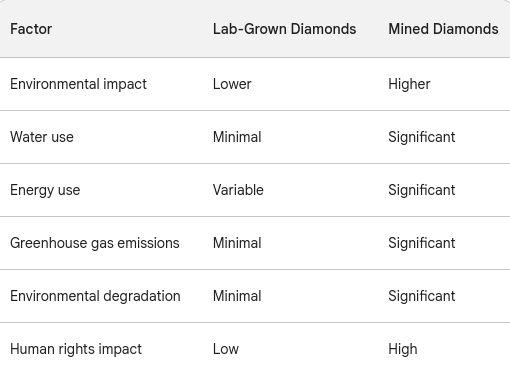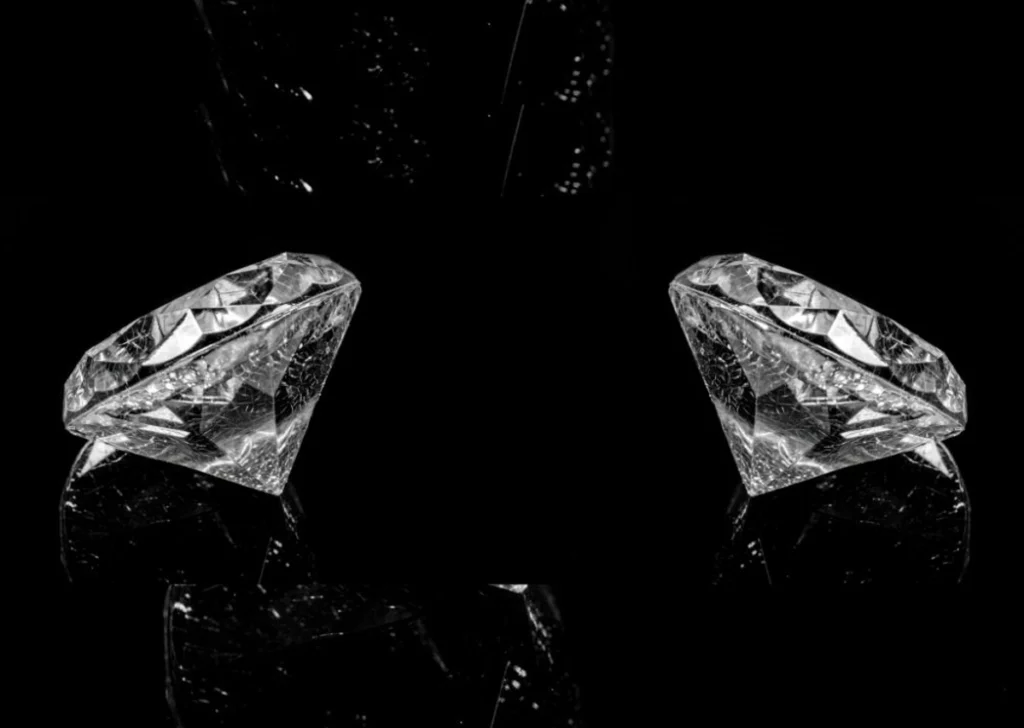Lab Grown Diamonds vs Mined Diamonds: An Overview of Environmental Impact
Diamonds have been admired for their beauty for thousands of years, more so since 1953 when they became a ‘Girl’s Best Friend’. The soaring love for the stone took a hit when the movie Blood Diamond came to the fore. Mined diamonds have since received continuous scrutiny for the mine-to-market process.
Somewhere around 2005, lab-grown diamonds saw a jump in manufacturing and now are quickly becoming an alternative to mined diamonds. Mind you, lab-grown diamonds are not moissanite or cubic zirconia.
The environmental impact of Lab Grown Diamonds vs Mined Diamonds is a complex issue. With both sides claiming to be environmentally friendly, it is hard for a consumer to believe either.
Most of us know that Lab-grown diamonds are made in a laboratory, so one doesn’t need to cut forests to give us a supply of sparkling stones. However, mined diamonds claim that lab-grown aren’t as eco-friendly as they are made to be.
So to understand the impact of both Lab Grown Diamonds vs Mined Diamonds, we need to evaluate certain factors, and then you can be your own judge and jury because we are committed to remaining unbiased and neutral.
We must understand the factors contributing to their supply to decode Lab Grown Diamonds vs Mined Diamonds.
Let’s understand them individually, so first, we go through the impacts of mined diamonds.
The Environmental Impacts of Mined Diamonds:
Deforestation:
Given that these mines are located in the interiors of forests, clearing forests becomes necessary to access diamond mines.
- This cutting of trees contributes towards releasing additional carbon dioxide affecting climate change.
- It can also lead to soil erosion, polluting waterways and damaging ecosystems.
Water pollution:
Mines have to dig deep into the ground level, and diamond mining uses water extensively.
- This can lead to water pollution, as the water can become contaminated with chemicals and heavy metals.
- This can further contaminate drinking water, making it unsafe for people and animals.
Air pollution:
The diamond mining process involves using diesel fuels, electricity and hydrocarbons.
- They release harmful gases resulting in air pollution.
- This can lead to respiratory problems, heart disease, and other health problems.
Environmental degradation:
Overall, Diamond mining can lead to environmental degradation.
- Destruction of habitats and the contamination of water supplies can result from mining.
- This can make it difficult for people and animals to live in the area, thus damaging the ecosystem.
Human rights abuses:
The diamond mining industry has been linked to human rights abuses.
- It is believed children and adults are forced labour.
- This means that children are often forced to work in dangerous and unhealthy conditions in diamond mines.
A study found that when comparing Lab Grown Diamonds vs Mined Diamonds, the environmental impact of mined diamonds is greater than that of lab-grown diamonds.
If you want to choose natural diamonds, look for Conflict Free Diamonds. They may be your best bet without leaving a heavy feeling.
If you are concerned about the environmental impact of your jewellery, then continue reading as we cover the effects of Lab Grown Diamonds next.
The Environmental Impact of Lab Grown Diamonds
Water consumption:
- Lab-grown diamonds consume less water to produce diamonds, a scarce resource in many parts of the world.
- For, e.g., 1ct of Mined diamond roughly requires 480L, Lab Grown Diamonds need 70L
Variable energy use:
- A laboratory setting is also more efficient and controlled for producing lab-grown diamonds.
- The energy use of lab-grown diamonds can vary depending on the method used. However, the energy use is typically much lower than mined diamonds.
High carbon emissions:
- For example, the different processes to create lab-grown diamonds and gemstones require high temperatures and intense pressures to produce gem crystals.
- Coal or natural gas plants often supply energy, which produces a great deal of carbon dioxide.
Minimal environmental degradation:
- Lab-grown diamonds do not require clearing forests or using chemicals, which can otherwise lead to environmental degradation.
- Lab-grown diamonds are not dug out or mined from Earth, causing lesser degradation.
A study found that when comparing Lab Grown Diamonds vs Mined Diamonds the environmental impact of lab-grown diamonds varies as per the method used and the energy source. According to the study ecological impact of lab-grown diamonds is lowest when the energy used to produce them comes from renewable sources, such as solar or wind power.
Here is a table summarizing the environmental impact of lab-grown diamonds and mined diamonds:

There are other factors on which Lab Grown Diamond may rate lower than Mined Diamonds. However, right now we are comparing only the environmental factors of Lab Grown Diamonds vs Mined Diamonds.
Final Thoughts
Lab Diamonds vs Mined Diamonds both contribute towards environmental impact. In this case, one more over the other. However, it is possible to reduce adverse effects by following specific guidelines and processes. It is also important to keep in mind that mined diamonds support the livelihoods of approximately 1.5 million miners and their families in the poorest communities, as diamonds play a significant role in their economies.
Ultimately, whether to buy a lab-grown diamond or a mined diamond is a personal one. There are many factors to consider, such as your budget, beliefs, and personal preferences. The most important thing is choosing a diamond you love that will bring you joy.
Remember, a diamond is not a stone but a symbol of an emotion!
This piece helped you get clarity on lab-grown diamonds vs mined diamonds.
Do write to us at connect@firstgenjeweller.com if you like to stay posted on more such blogs



Be the first to leave a comment